What is BT?
Bt is the abbreviation for bacteria that were named Bacillus thuringiensis in 1911 after the discovery that they could kill Mediterranean flour moths in the German city of Thuringia.
These common soil bacteria have been used as microbial insecticides for the last century.
Farmers in Europe were the first to recognize their potential in 1920, and US farmers started using them in 1958. The Environmental Protection Agency (EPA) registered them as a pesticide in 1961.

We link to vendors to help you find relevant products. If you buy from one of our links, we may earn a commission.
They can be used on foliage, food storage facilities, soil, or water environments.
Why are these bacteria so widely used? They occur naturally, affect very specific insects, and are relatively inexpensive and safe for humans, birds, fish, and most beneficial insects.
However, for them to work effectively, you need to know what type of insect you want to target and make sure that you purchase a strain that will kill that particular species.
The National Pesticide Information Center reports that there are more than 180 pesticide products registered that contain Bt! And many have been approved for use in organic agriculture.
We at Gardener’s Path will cover the strains of Bt that are widely used. With thousands of strains out there, we can’t go over all of them!
We will list the strains that you are likely to encounter and describe how to use them.
What You Will Learn
What Kinds of Insects Does Bt Kill?
Each strain of Bt will kill different kinds of insects. Some strains are very specific for a few species, while others will kill across a large class of insects.
The most commonly used types are shown below:
| Bt Type: | Controls: |
|---|---|
| Bacillus thuringiensis kurstaki (Btk) | Most caterpillars |
| Bacillus thuringiensis israelensis (Bti) | Mosquitoes, flies, fungus gnats |
| Bacillus thuringiensis San Diego | Specific beetles |
| Bacillus thuringiensis tenebrionis | Specific beetles |
| Bacillus thuringiensis aizawai (Bta) | Some caterpillars |
Since the insect has to eat the toxin to be affected by it, that means that insects that don’t feed on the surface of plants are not likely to come into contact with the toxin and therefore will not be affected by it.
For example, soil insects are not likely to eat Bt. Insects that quickly bore inside plant tissue, like corn earworm, may not be exposed to enough Bt to be affected by it.
And beneficial insects – busy grazing on other insects and not plants – are likely to be unaffected by the bacteria.
How Does Bt Kill Insects?
Bt will only kill insects that eat the toxin and are susceptible to it. This is not a toxin that will kill on contact like most insecticides.
Once eaten, the toxin affects a specific switch in the stomach – like a lock and a key. This switch (a receptor) activates a reaction that makes holes in the stomach.
The contents, including the toxin and normal gut bacteria, spill out into the rest of the insect’s body, and it dies of infection and starvation.
It can take the insect hours or days to die. Typically, the insect remains on the plant as it is dying, so don’t be alarmed if there are still insects on your plants even after treatment. They are probably on their deathbeds.
The insects are usually the most susceptible when the larvae are small.
How to Kill Caterpillars With Bt
Bacillus thuringiensis kurstaki (Btk) is the best known and most widely used strain of Bt. It kills the larvae of many types of moths and butterflies.
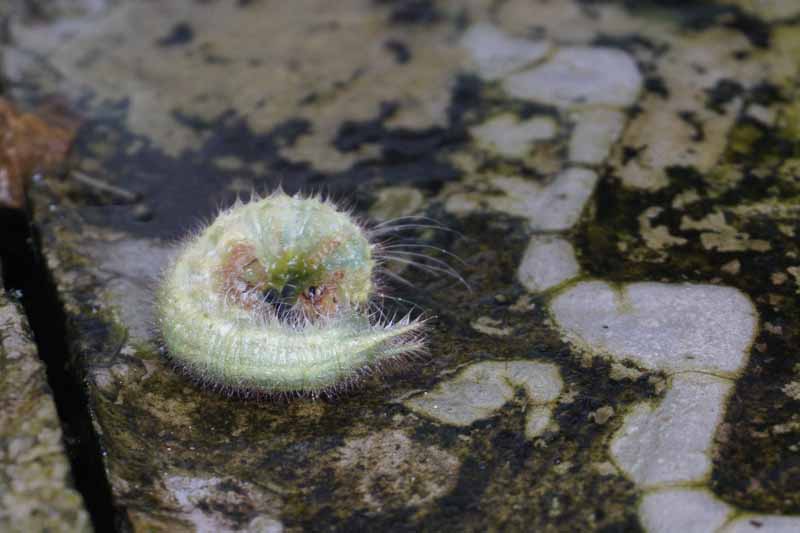
This means that you can control most caterpillars with Btk. This includes many types of caterpillars more commonly known as “worms” that feed on broccoli, cabbage, and other crucifers.
Monterey Btk Liquid via Arbico Organics
Other caterpillars commonly controlled by Btk include the European corn borer, tent caterpillars, gypsy moths, and other forest caterpillars. There are even formulations designed to control Indian meal moth larvae in stored grain.
Several Btk formulations are available from Arbico Organics.
Another strain of Bt, Bacillus thuringiensis aizawai (Bta) kills the larvae of wax moths in honeycombs.
How to Kill Mosquitoes and Flies With Bt
Fortunately, there is a strain of Bt that controls the larvae of many biting flies and mosquitoes! Bacillus thuringiensis israelensis (Bti) is commonly used by governments or non-governmental organizations to control mosquitoes on a large scale.

For example, the World Health Organization switched to using Bti to kill mosquitoes as part of its anti-malaria campaign rather than use chemical pesticides.
AQUABAC® 200G Granular Bti Mosquito Control
You can buy Bti from Arbico Organics to kill mosquitoes on your property. Mosquito dunks are a very popular product to kill these creatures in your water garden or rain barrels.
Mosquito Bits & Dunks Combo Kit
Bti is very effective against Aedes and Psorophora mosquitoes. However, if you are trying to kill Anopheles or Culex, you will need to use greater amounts of this insecticide.
As far as flies go, you can use Bti to kill black flies but not houseflies, blow flies, or stable flies.
You can also use some strains to control the larvae of fungus gnats in greenhouses or mushroom production. In this case, you would apply the Bti as a drench to the soil (for plants) or culture media (for mushrooms).
How to Kill Beetles With Bt
You may or may not know that beetles comprise the largest number of species in the world, and there are more than 350,000 of them! Fortunately, most of them are not garden pests.
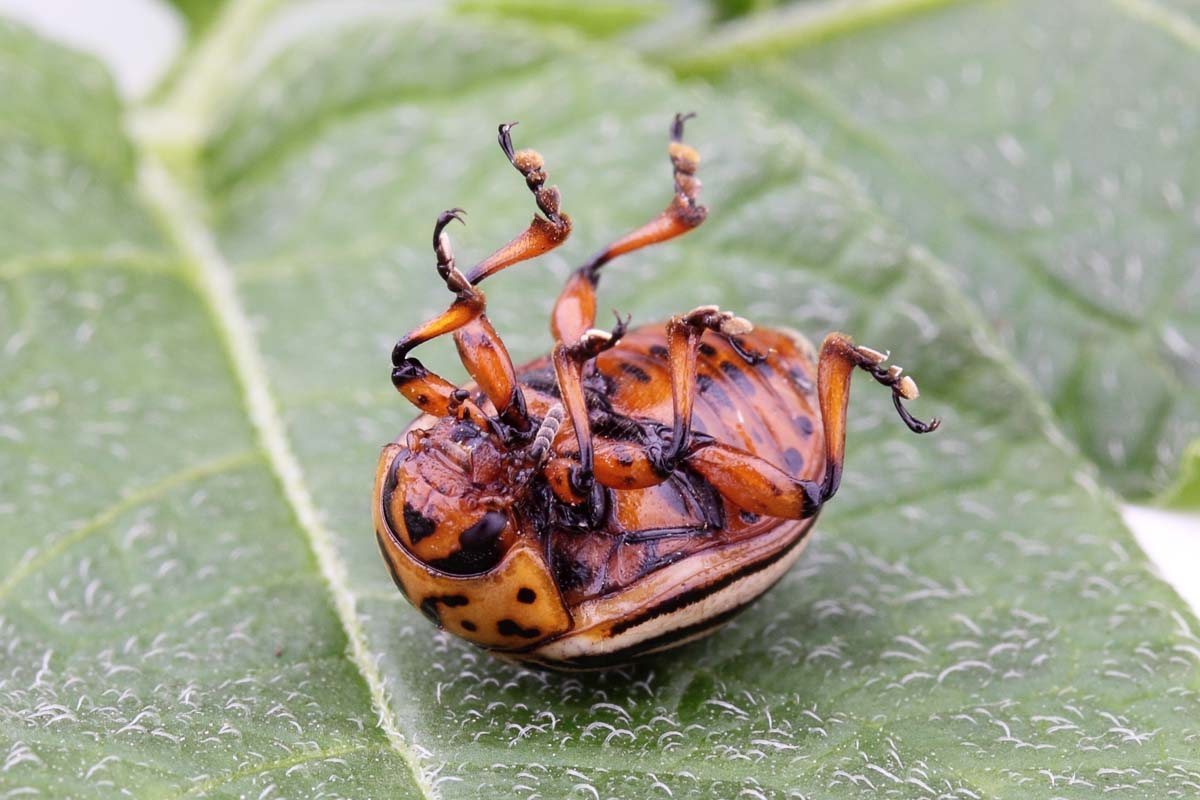
However, the Bt strains available only affect a few types of beetles. Some of them are major pests, though.
The bacteria to use to control beetle larvae are either Bacillus thuringiensis san diego or Bacillus thuringiensis tenebrionis.
Beetles that can be controlled include the Colorado potato beetle, elm leaf beetle, and willow leaf beetle.
Tips For Applying Bt
First, make sure you have the right strain for the pest you want to control! You should also make sure that the insect will be in its larval stage when you apply the Bt.
You will have better control if the larvae are small. There will be less damage to the plants because the little insects won’t eat as much.
If you treat larger larvae, they will eat more of the plants and cause greater damage. Also, they may morph into the reproductive phase and become insensitive to the toxin.
And avoid high pH water! A pH greater than 8 is what activates the toxin in the insect’s gut, and you don’t want it to be activated ahead of time and then be useless by the time you apply it.
The spray will be more effective if you add a spreader or sticker to the tank mix. Use the spray within 12 hours of mixing. Make sure that you are spraying both the top and bottom surfaces of the leaves.
While it can survive for years in the ground if adsorbed to soil particles, Bt is rapidly inactivated by the UV radiation in sunlight.
Many people spray their plants in the evening, so the toxin can work overnight before being inactivated by the sun the next day.
The bacteria are sensitive to temperature and must be stored at 50 to 60°F. Do not expose the bacteria to hot or cold temperatures, which can kill them.
Precautions to Take
Bt has tested extremely well when examined for toxicity or the ability to cause cancer in animals – even at extremely high doses.
This microbe does appear to be truly safe for humans – even when eaten. Human stomachs are acidic, not alkaline, so they digest the Bt toxin.

However, some products are used in the form of a dust, and there have been a few instances of allergic reaction to the dust when the product was applied.
Just to be safe, you should wear gloves, long sleeves, and trousers when you apply the microbial insecticide. And then wash thoroughly afterwards.
Take Steps to Minimize Resistance
Like any pesticide, the targets of Bt can develop resistance, although this rarely happens.
The diamondback moth, a pest of cabbage and other cruciferous plants, is the primary example of an insect that has developed resistance in the field.
Many insects have shown resistance in the laboratory and are being studied.
If you use Bt on your farm, the EPA will require you to take some steps to prevent resistance. One way is to alternate its use with synthetic insecticides.
Another is to rotate your crops. Since different kinds of insects feed on different crops, you would be using a different type of Bt.
The large variety of Bacillus thuringiensis strains available enables gardeners, farmers, and mosquito control experts to control an array of insect pests.
Since the strains are highly specific to the insects targeted, residual effects against other organisms are not a concern.
The widespread usage of Bt has been a boon to farmers and to people who are now sprayed with these bacteria to kill mosquitoes instead of DDT!
And for more biological control tips, check out these guides next:
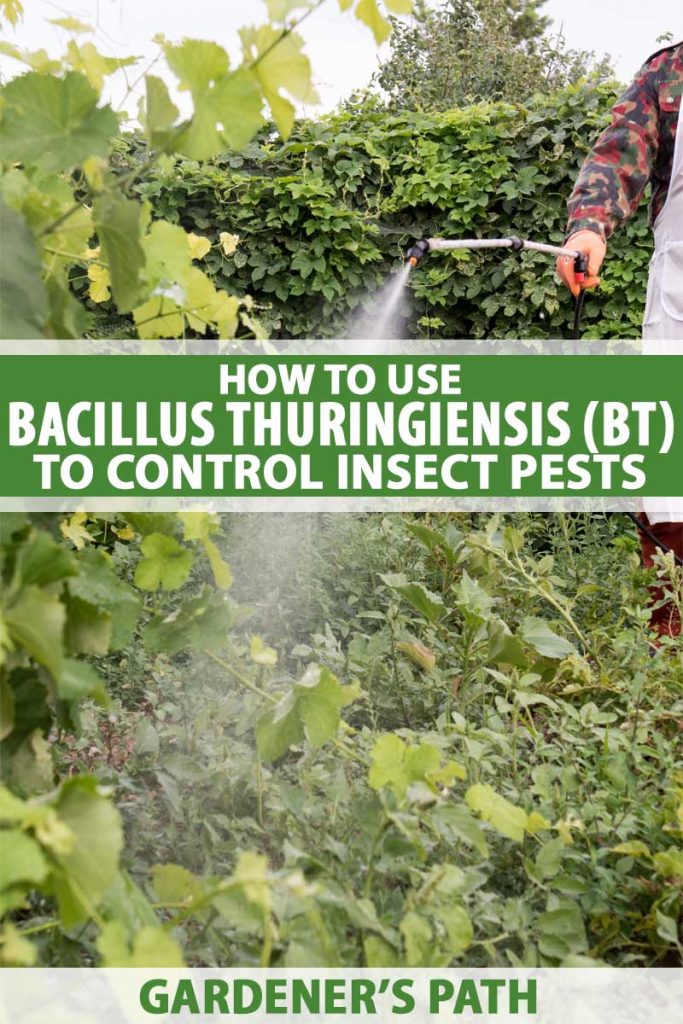

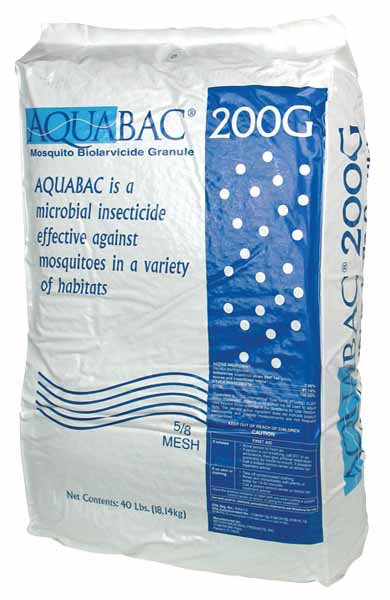
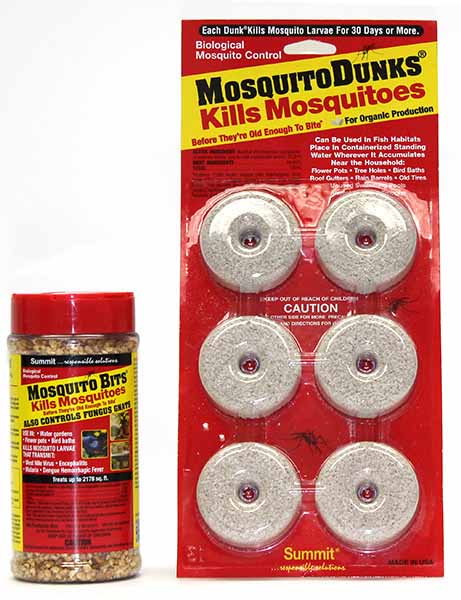
I’m trying to find out if BT (specifically Aqua Bac, Bacillus thuringiensis isrealensis, serotype H-14, strain BMP-144, 200 international toxic units per mL) will kill any other pond dwellers in my pond before I can start up the pump besides mosquito larvae. I have seen beetle and dragonfly larvae, as well as caddisfly larvae, some little unidentified black dots and some others that look like little scorpions. I don’t want to kill them, but I do want to get rid of the mosquito larvae. Is this possible, or do I have to sacrifice the potentially harmless or beneficial larvae to… Read more »
Hi Janis, Thank you for your question! BTI kills only mosquito, blackfly, and fungus gnat larvae, so the other creatures in your pond should be safe.
Helga, there are many types of desirable fly larvae that occur in ponds and streams, some fairly closely related to mosquitoes and or blackflies. Chironomidae are among them, and there are a few thousand species of those. Are they killed by BTI? Thanks.
Dear Dr. McNeely, Thank you so much for your informative question! I wasn’t familiar with non-biting midges. Apparently, the larvae are much less sensitive to BTI than some mosquito larvae are (15-75 times less sensitive). However, it seems as if people do try to control them sometimes, because the adult midges can be considered a problem to the general public and industry. The susceptibility of the flies varies by subfamily: the Chironominae are the most susceptible, although the filter feeders are more likely to ingest BTI than the predators, collector-gatherers, shredders, or scrapers. Members of the Tanypodinae group are the… Read more »
I have a bottle of Safer brand “Garden Dust” with BT.4365%. I feel like I waste a lot trying to squeeze the dust out of the container. Would it be OK to mix it with water and spray plants with a small hand sprayer? How much BT powder should I mix with a given volume of water? Thanks!
Hi Linda, That does sound like a pain. You should be able to spray BT in water if you start with the right formulation. However, I would advise against putting the dust in water. It would have the appropriate chemicals to make it stick to the plant. There are other formulations that you do mix up and spray. I tried to look for ones that you could use that way, but I don’t know which form of BT you are using. If you let me know, I may be able to lead you to a BT powder that is meant… Read more »
What type of insects are you trying to control, Linda? As Helga said, products that come in powdered form that are described as a “dust” should usually be applied in this manner, rather than mixing them with water.
Safer makes a similar product that I use, which comes in a liquid concentrate that you mix with water and spray on plants. Their Caterpillar Killer Concentrate comes in a green bottle, and it contains Bt Kurstaki. You can find it here, on Amazon. But keep in mind that different types of Bt are meant to target different varieties of insects.
Hello everyone. Can we inoculate the BT into honeycomb mesh for slow and continuous release in running drain water to increase the population in continuous manner?
Hi Abjihit, I’m not sure I understand your question. Are you using the type of BT that controls mosquitoes?
I don’t understand how parsing it into running water would increase the population. Could you please explain your idea in more detail? Thank you so much!
According to Cornell university and from personal experience as a beekeeper, BTa is completely harmless to honeybees. I have used it for over a decade to control wax moths and it works great. You shouldn’t post articles about things you don’t know about.
Thank you for bringing this to our attention. The sentence “However, the aizawai strain is highly toxic to honeybees.” appears in the National Pesticide Information Center general factsheet that was reviewed in February 2015. That does appear to be incorrect. Cornell is a fabulous source for agricultural information. We will alter the article to reflect this updated information.
The topic of honey bee toxicity to BT aizawai is extremely confusing. The EPA re-registration document says on one page that it is highly toxic and on another page that it isn’t toxic at all. However this year’s registration of B402 for wax moths on honey bee comb clears that up a little: “EPA expects minimal to no exposure to honey bees and other nontarget organisms because of the method and timing of application. As noted, beekeepers would make a one-time treatment directly to empty honeycomb frames prior to winter storage. And hives maintain temperatures above 35°C, thus preventing Bta… Read more »
Hi Randall,
Thank you SO much for posting this information! I was concerned when I thought that I had provided incorrect information, although that was puzzling, since it came from a reputable source.
Your information solves the puzzle! I really appreciate that you took the time to post it and provided the link!
Biology is amazingly complicated.
I’m concerned about the statement “The bacteria are sensitive to temperature and must be stored at 50-60F. Do not expose the bacteria to hot or cold temperatures, which can kill them.” If I order online, or buy in a store, the temperature is warmer than 60F. In the summer the temp. could be in the 80s or 90s where I live so mail order isn’t a good choice. How is it possible to purchase BT in concentrated form or “ready to spray” form that will be alive due to warmer temperatures above 70F even in an air conditioned store?
Hi Linda,
Thank you for your question! I think these recommendations operate out of an abundance of caution. The main thing is to not leave them in a hot truck or car. The bacteria should be able to survive the temperatures of shipping or travel from a store. The 50-60°F recommendation is for long-term storage, so I think you should be fine. What insect are you treating?
Hello. Which pesticides are used to control bacteria and fungi and insecticides and how to grow best yield for brinjal crops?
Hi Yeswanth, you have multiple questions that are widely outside the scope of this guide, I would recommend registering for our forums and posting individual questions there within the applicable sub-forum. Also check out our eggplant growing guides.
Does Scott’s grub be gone kill earthworms and ants?
Hi Poodlemom,
Different strains of BT are specialized for particular pests.
It looks like this product contains a strain of BT that is specialized for beetle larvae, i.e., grubs. It should not affect earthworms or ants.
I am battling an army worm infestation that has wiped out my broccoli and collard greens.
Aside from spraying the leaves w/ btk, is there anything I can mix directly into the soil — either a powder or a soil drench — to combat these creatures.
Hi Joe,
I’m sorry to hear about your infestation. That sounds dreadful!
Bt is commonly used as a soil drench, too. I would double check the information on your package, and see if they list that as an option.
However, one problem with doing that is that you can kill beneficial insects.
There are parasitic wasps that will control army worms, too. Here is information about them from Arbico Organics.
Good luck banishing the pests from your garden!
Can this be used on yards, or is this typically only a product for collected water? I don’t find that I have standing water, but our mosquito population is high so I was hoping this would help.
Thanks!
Angie
Austin, TX
Hi Angie,
That’s a good question! I’m pretty sure that you need standing water for Bt to control mosquitoes.
Sorry about that.
hello Helga,
We are trying to combat some young gypsy moth caterpillars in our trees.
I have a couple bottles of Safer’s BTK. The ratio calls for 30 ml into 10 L of water. Can I utilize this product in a Scotts Dial N Spray garden hose sprayer (thinking I could get to the tops of trees)? if so any idea how I can determine what spray setting to use on that Dial N Spray ? Thanks!
Sure, you can use the sprayer to get higher up in the tree. You’d want to use the dial setting at level 5 (4 tsp) to get approximately the right ratio.